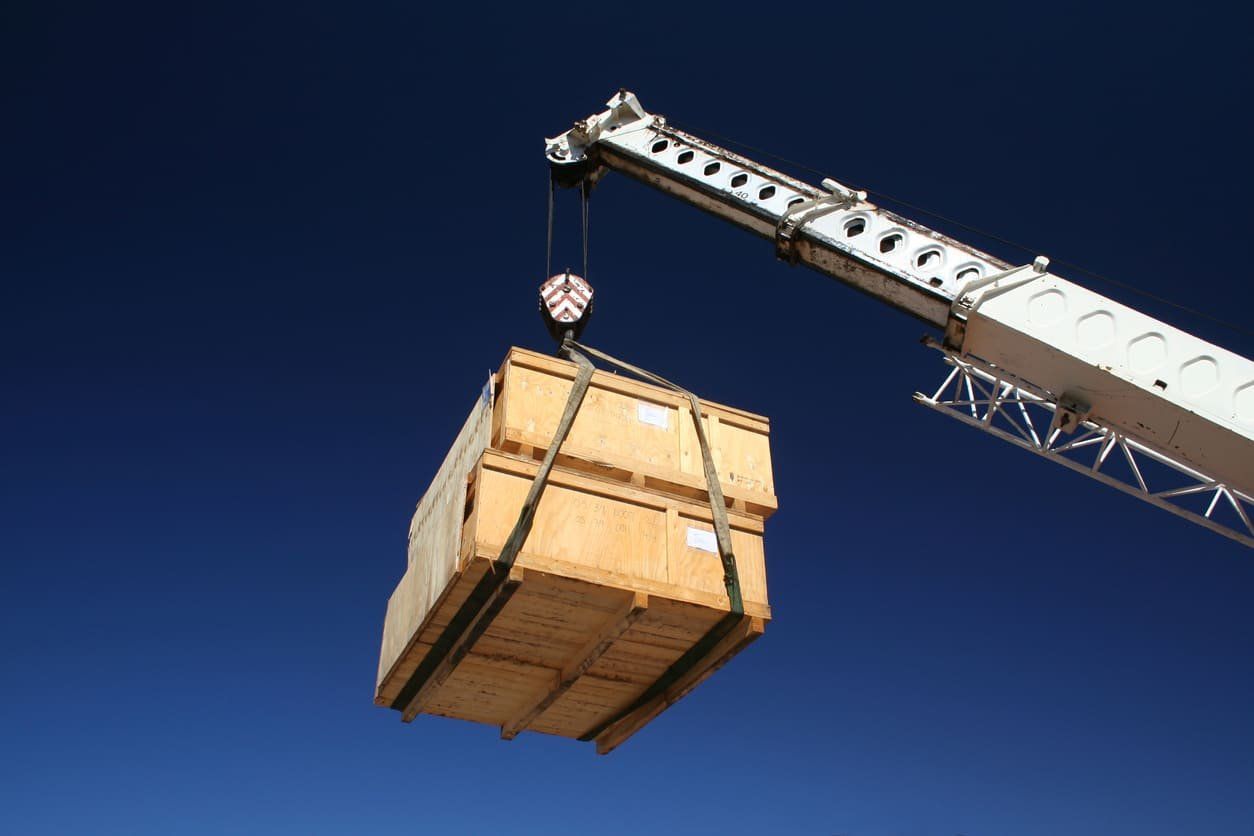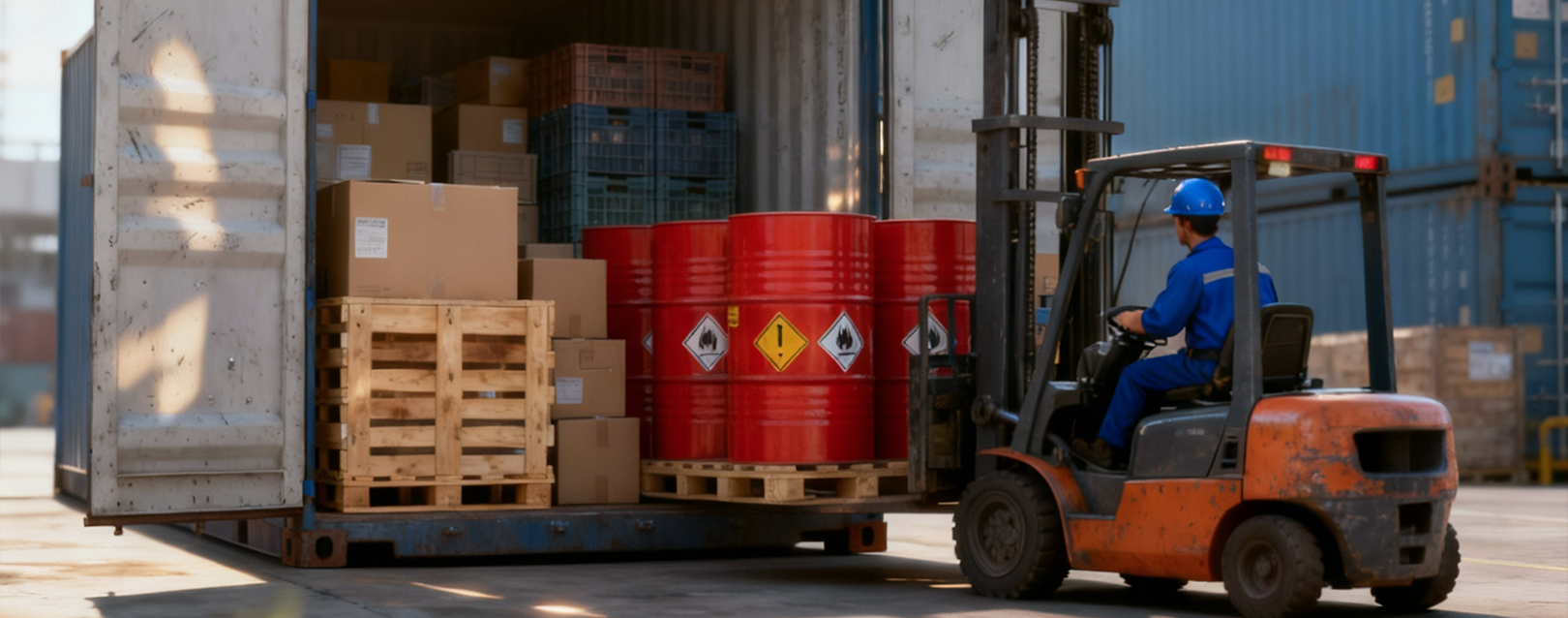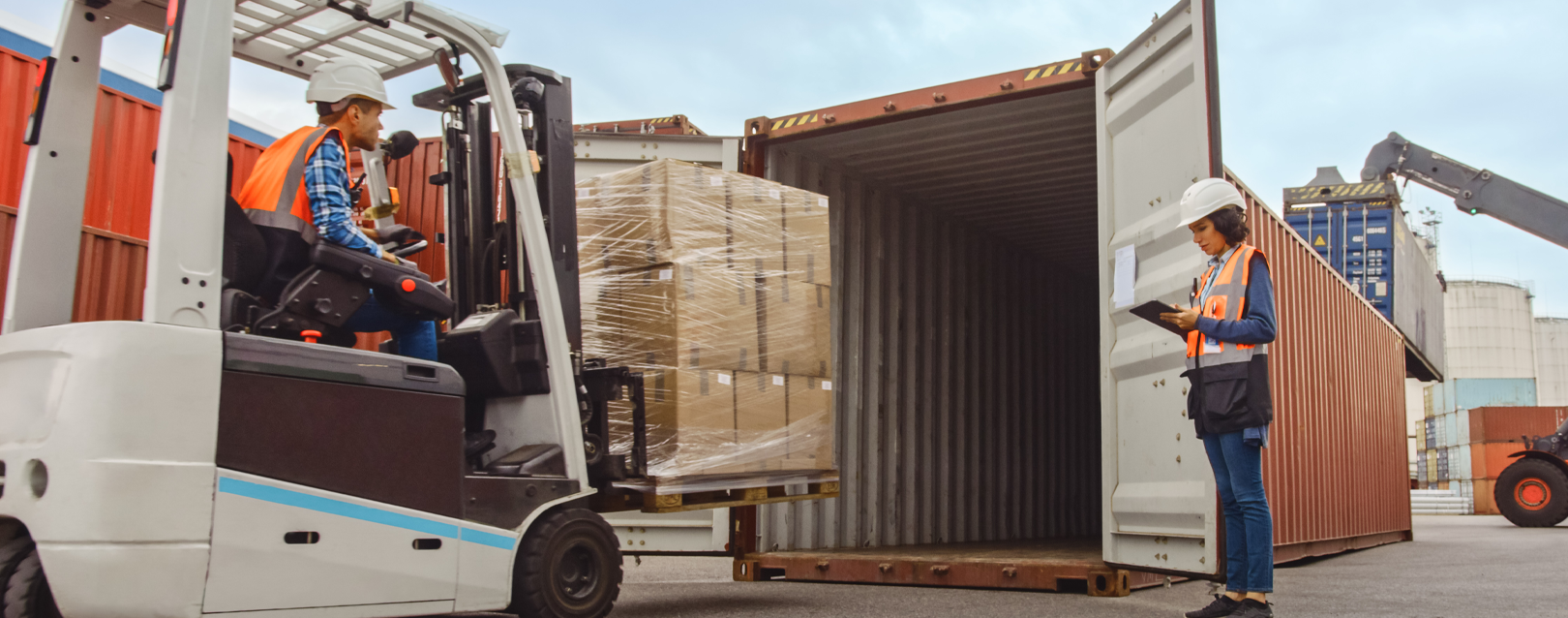
Anyone who works or intends to work in the import and export sector needs to master the various concepts and terms that are specific to foreign trade. Having knowledge about the set of operations that make up the segment helps the company to be successful.
This makes it easier to make the best decisions for your customers. In foreign trade, for example, there are terms related to the shipment of goods, whether for import or export. Two of these terms are FCL and LCL.
The two acronyms are always applied to import and export operations, determining the cargo transportation mode to be chosen by the company.
By understanding the difference between the two concepts, LCL and FCL, you can see which of the two alternatives is more viable for your business, since each mode has different fees and operations to be performed.
Having this type of information is important to know how to correctly choose the most appropriate transportation. It means choosing the mode that is compatible with the company's financial availability, the goals and deadlines established for the end customer.
Because of this, we will learn everything about the LCL transportation mode in this article. The goal is to understand its concept and characteristics, costs and under what circumstances it is useful for the company.
With this, we offer you the know-how to choose a cargo transportation service with intelligence and insight. We will therefore see how LCL can make import or export logistics more efficient and the application of costs in transportation more accurate.
What does LCL shipping mean?
First, let's understand in depth what LCL transportation means. As we know, international cargo transportation can be done by plane, ship, truck or train, but here in Brazil it is most commonly done by plane or ship.
In the case of ships, it is common to use standard containers for transportation, which can hold up to 25 tons of cargo depending on the location to which it will be sent. Remember that the weight of the container itself is not included in the freight calculation.
As mentioned, the term LCL is the acronym for Less than a Container Load. In practice, it means that the cargo to be transported is not enough to fill the entire container on a ship.
In this way, the container is shared with cargo from other exporters or importers, until it is fully occupied. Therefore, this mode is recommended for companies that do not transport large quantities of goods.
Because it is shared, the freight will have a lower cost, since the total cost of the container freight will be divided among the other users of the service. This benefit will be explained in detail later.
The LCL shipping option is also viable for those who are starting out in foreign trade and do not have the resources to invest in an entire container or even so much cargo. This also allows the company to avoid paying for space that it will not use in full.
The difference between LCL and FCL
Unlike LCL, FCL involves renting the entire container. When using a full container load shipping service, the company will have the entire space in the container dedicated to its goods.
Because it does not share the space with goods from other owners, FCL has a higher freight cost for the exporter or importer. However, the service can be used when there is a large amount of goods to be transported, there is a certain urgency in receiving the material or even for loads that cannot be mixed with other products.
When to choose LCL shipping
As we have already said, LCL shipping is ideal for companies that do not have the means or even the need to rent an entire container. However, it is important to keep in mind that shipping times are longer.
However, if the goods cannot be transported by plane, but are also too small for an FCL, LCL is the solution. Other reasons to consider when choosing LCL are:
- When your company frequently sends smaller orders to customers in different locations;
- When you are starting out in the market or testing a new import/export segment;
- When the company wants to work with small shipments to keep its inventory leaner.
LCL Shipping Challenges
As it is a shared transportation service with other companies operating in foreign trade, LCL presents some challenges that managers should be aware of. First, we need to understand how the LCL shipping process works.
Consolidation and submission process
When contracting the service, the first stage of the shipment is called consolidation. It refers to the grouping of all the cargo and goods that will occupy the container. This process may take a while until the NVOCC gathers all the goods, already cleared for export, and groups them in the container. Only after this process is completed is the shipment forwarded to a port, where it will await clearance for LCL shipment. In some situations, shipments may be transferred from container to container, according to international dispatches and their final destination. Upon reaching the final point, the container goes to destuffing/unstuffing, a term used to describe the process of removing the cargo from inside the container. Only then, after customs analysis, is it dispatched on other transports to its final destination.
Time
As we have seen in this process, the first challenge of LCL is the transportation time. Therefore, the analyst or manager of the area needs to include this time in their planning so as not to generate expectations of a load that will arrive in a longer period of time.
Another point to be aware of when contracting and planning LCL transportation is that the route is not always regular, which will also influence the arrival time. Therefore, it is important to have all the documentation prepared for this type of shipment, since any stop at a customs post can further extend the delivery time.
Customs
Another aspect to be aware of when shipping LCL is that customs inspections will occur more frequently, since these are different types of goods. Therefore, any problem with another item will result in the entire contents of the container being held at the customs post, even if the other materials have their documentation in order.
Shared responsibility
In LCL shipping, the success of the international transportation of the container is the responsibility of all lessees. This means that everyone must strictly comply with the legal and regulatory obligations for international transportation, to avoid shipments being held up at international customs posts.
Therefore, this is an aspect over which there is no control. Since there is no guarantee that other exporters or importers have taken the same care with the documentation and packaging of their goods.
Demurrage
Shipping documentation must be well organized and filed to avoid retention and physical inspections of the container. Otherwise, cargo delays may generate other costs, in addition to impacting the final delivery.
For example, if the cargo is retained at an international port, carriers and maritime authorities may charge demurrage (daily fees) for the retention.
Proper packaging
Cargo may also be retained when the goods are not packaged in sufficient or suitable packaging for the type of product. Therefore, in addition to the correct documentation, safe packaging must also be ensured. This prevents problems with cargo being retained during the journey and the resulting extra costs and delays.
Advantages of LCL
There are many challenges, but taking good care of the documentation and packaging process can minimize them. Furthermore, when hiring a company that can assist with LCL transportation, choosing a reliable NVOCC offers great advantages.
Reduction of freight costs
Due to all the fees involved, international freight transport can be quite expensive, which affects the final value of the product. For this reason, LCL is seen as the most cost-effective consolidation of goods for the exporter.
After all, it divides the cost proportionally among all those who will use the container, offering the best cost-benefit for exporters/importers of small volumes.
International transportation of small shipments
As mentioned above, with LCL it is possible to export or import small shipments of goods. This allows the entrepreneur to have a greater variety of products in his stock, without overloading it to “compensate” for FCL freight.
The risk of this investment, in addition to being much higher, is that the product may not sell as expected and may end up stuck in the store, for example.
Lower risk of loss
Another advantage is that with LCL, the trader has the opportunity to try other import markets with a lower risk of loss in the event of loss.
Therefore, if there is any problem with the cargo, even if it is not your responsibility, the loss due to the long delay will be minimal, since it is a small shipment.
Opportunity for experimentation
LCL is also ideal for exploring new brands and suppliers, testing the service and product before making major investments. Imagine, for example, exporting makeup products from a new brand and exploring this sector without high initial costs.
Reducing logistics costs
Other costs that are deducted in LCL shipping are general logistics costs. In addition to freight, other fees are charged at a lower cost than in FCL shipments.
Shorter delivery time
We talk a lot about LCL, how it can be delayed and take longer, but individually, LCL can also be faster for the entrepreneur.
How? With this alternative, the company does not need to wait for demand to fill an entire container and place orders as needed. In practice, this means that the product can be available in stock in less time than if it were to wait for an FCL to fill.
Leaner inventory management
All of the above advantages result in the latter. Thus, it is possible to have a much more compact and controlled stock with LCL. With this modality, the stock can be diversified (several suppliers), without being overloaded with the risk of product being left unsold and meeting customer demands.
Types of LCL cargo
In LCL transport, it is important to prioritize cargo that has shipments of a similar nature to yours. This aspect guarantees savings in several logistics and transport processes. In addition, it can minimize physical customs inspections. Therefore, it is necessary to know the types of cargo that can be transported via LCL and their specificities in the operation.
General cargo: This includes goods such as parts and pieces, machinery, car parts, etc. This type of cargo is normally packed in boxes and pallets.
Dangerous cargo: Requires safe packaging, as it refers to cargo that can put people and other goods at risk. These must follow the United Nations Recommendations for the Transport of Dangerous Goods. Example: explosives, gases, flammable products, etc.
Below are some types of containers used in LCL: Dry standard: fully enclosed container, used to transport general cargo, furniture, clothing, food, etc.
High cube: same logic as dry standard, but slightly higher in height.
Reefer: container for goods that need to be refrigerated. Used for transporting medicine, food, etc.
Open top: has the same dimensions as the dry standard, but has a canvas roof that allows the transport of goods that do not fit in a traditional container. It is more expensive, since it does not allow a container to fit on top of it.
Flat rack: container with movable parts, ideal for loads with excess sides and height
Main expenses in LCL shipping
As we have seen, LCL shipping goes through several steps and requires some payments for the various services in the process. Thus, the cost of LCL is calculated mainly by volume, usually in cubic meters (m³).
Therefore, the more space your merchandise requires, the more you pay. However, weight is also taken into consideration in some cases when the cargo is heavier than bulky. Imagine, for example, shipping an anvil. Since the product is much heavier than large, the NVOCC will charge based on the weight.
In general, the 4 main fees, in addition to shipping, are:
Terminal Handling Charge (THC)
This rate refers to services related to port handling. In LCL transport, the THC calculation is determined according to the value per ton or cubic meter, with the highest value being charged. In FCL, the rate is set by the shipping company and is a single amount.
Bill of Lading (B/L)
Tariff paid for issuance. It therefore refers to the issuance of the bill of lading known as BL.
International Security Port Surcharge (ISPS)
Rate charged by shipping companies to offset any additional costs for safety reasons. In the case of LCL, a fixed amount is charged per shipment.
Delivery of Goods
Upon arrival at the final port, the carrier will charge a fee for the ground transportation of the goods. For LCL, the amount will be charged based on the taxable weight, which is calculated using a service-specific formula.
How to calculate shipping for LCL shipping
Em linhas gerais, o valor total do frete para uma carga LCL vai considerar uma série de taxas e sobretaxas, permanentes ou temporárias que dependem da origem e destino da carga.
No processo de envio à entrega no ponto final da compra, são cobrados custos de coleta, armazenagem, consolidação, deslocamento e entrega. O custo de coleta da remessa refere-se à retirada da mercadoria no depósito ou na fábrica.
Já o custo de armazenagem e consolidação diz respeito ao espaço onde o contêiner está aguardando as mercadorias. Além disso, o frete do modal marítimo será cobrado de acordo com os valores praticados em cada rota, levando em consideração o país e demais tratativas do local de embarque.
Por fim, como já mencionado, entra ainda o valor de entrega, que é realizado individualmente. Quanto ao transporte marítimo, algumas rubricas específicas vão compor o frete:
O/F (Ocean Freight): trata-se do frete em si da carga, sem taxa adicional. No transporte FCL é um custo cobrado levando em consideração o tipo de contêiner e também a mercadoria em si que será transportada. Já no LCL, o custo varia de acordo com a tonelada ou m³;
BAF (Bunker Adjustment Factor): é uma taxa aplicada para corrigir as alterações no preço de combustível;
CAF (Currency Adjustment Factor): taxa que cobre eventuais mudanças cambiais (um percentual aplicado sobre o frete e as sobretaxas em moeda internacional).
Além dessas taxas, outras sobretaxas são incluídas no transporte marítimo, também relacionadas ao frete das mercadorias.
São elas:
> EBS/BRC/BUC (sobretaxas de emergência);
> SCT (tráfego sobre o Canal de Suez);
> PCS (tráfego sobre o Canal do Panamá);
> Áden (tráfego sobre o Golfo de Áden);
> CSF/SEC (sobretaxa de segurança).
Há ainda sobretaxas temporárias de frete (aplicadas em casos específicos tanto no LCL quanto FCL), como WRS, WS, Port Congestion, PSS, GRI/GRR/ERR.
Dicas para contratar um transporte LCL
O primeiro passo para buscar por transporte LCL é pesquisar opções de agentes de carga, comissárias de despacho ou os chamados NVOCCs (Non Vessel Operating Common Carriers) - empresas que atuam indiretamente ou diretamente na consolidação de cargas.
Desse modo, é importante conhecer o histórico e forma de trabalho da empresa, os serviços que eles oferecem e as garantias quanto ao cuidado e cumprimento de prazos.
Não caia na cilada de contratar o mais barato. Sabemos que o custo é importante, mas outros pontos devem ser analisados como: tempo de trânsito, regularidade do serviço, se ele é direto, entre outros pontos.
Ter algumas cotações te permite observar o melhor custo-benefício de acordo com o tipo de mercadoria e demanda que você precisa transportar. Por isso, conheça também as necessidades de acondicionamento do seu produto. Vimos que existem cargas com demandas específicas de embalagem e acondicionamento.
Assim, saiba exatamente como o seu produto deve ser acondicionado para contratar o serviço de carga mais adequado. Aqui, não é questão de economizar no frete, mas evitar um prejuízo maior com danos na mercadoria em si.
Também é importante conhecer as dimensões internas do contêiner para entender o espaço que ele oferece e o espaço que você precisa e decidir por um serviço LCL ou FCL.
Outra dica é solicitar as dimensões do pallet (aquela “madeirinha” que fica abaixo das suas caixas). São os materiais usados para melhor acondicionamento das mercadorias e eles ocupam espaço também.
Esse espaço do pallet entra no cálculo do seu frete. Por isso, é importante saber com os fornecedores sempre as dimensões das embalagens e dos pallets. Com isso, é possível fazer um cálculo correto sobre o frete a ser pago e não ser surpreendido com um valor acima do esperado.
Resumindo, o transporte LCL é recomendado para empresas que querem importar ou exportar pequenos volumes de mercadoria, sem necessidade de contratar um contêiner dedicado.
O que o gestor deve considerar na escolha do tipo de transporte é o tipo de produto que vai transportar e o tempo máximo que ele tem para chegar ao destino final.
Dois itens são indispensáveis no sucesso dessa operação: planejamento de tempo e custo, somado a um consolidador confiável. Com resultado, o transporte LCL pode otimizar a logística de entrega da empresa, enxugar custos e dinamizar a gestão do estoque.
Conclusão
Em resumo, o transporte marítimo LCL é uma modalidade viável e econômica para cargas com volumes menores que não preenchem um contêiner completo.
No entanto, é necessário avaliar cuidadosamente a viabilidade de sua utilização, levando em consideração as especificidades da carga, seu valor, dimensões e peso, bem como a urgência da entrega.
É importante também analisar os diferentes tipos de acondicionamento de carga, como a unitização e a estufagem no contêiner, avaliando sempre as necessidades de cada operação.
Compreender as diferenças entre LCL e FCL é fundamental para a escolha do melhor modal, garantindo assim um serviço de alta qualidade e satisfação do cliente.
Para um embarque LCL de sucesso, fale com nossos especialistas e conte com a Allink.
Continue a navegar no blog da Allink
Mantenha-se informado sobre o comércio exterior
Assine nossa newsletter e receba atualizações semanais de forma gratuita sobre o mundo da logística.





